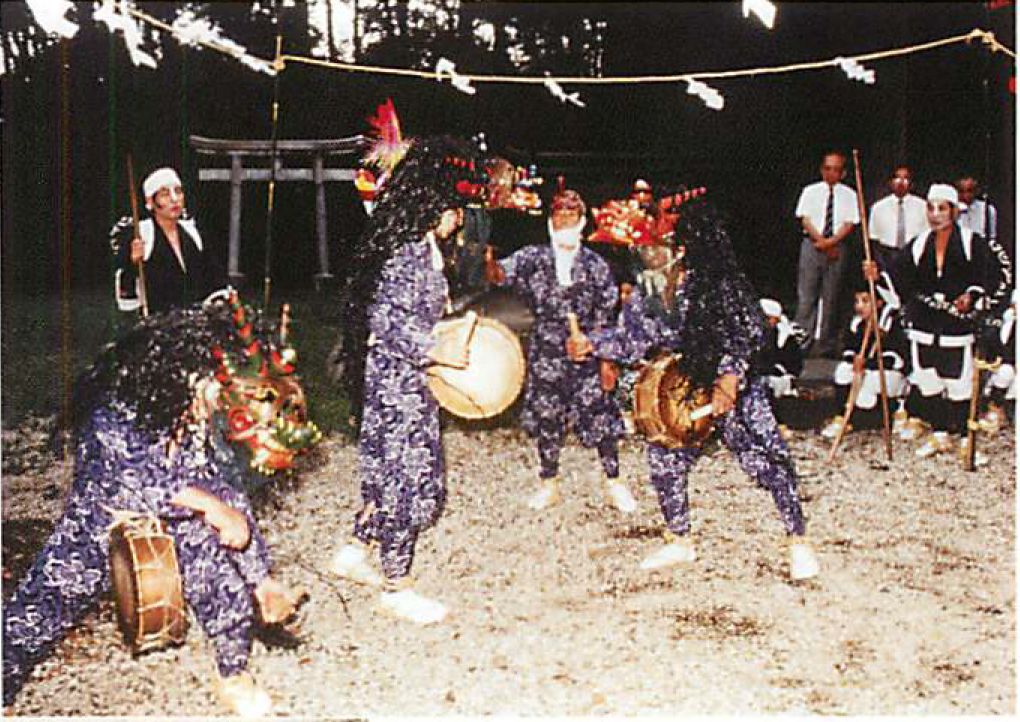| <伝承地 瑞穂町箱根ケ崎> | <Location of tradition: Hakonegasaki, Mizuho-machi> |
| 箱根ヶ崎の獅子舞の由来は、つまびらかではないが、古来より伝わる由緒ある芸能で、江戸時代の初期にはじまったものといわれている。安政4年(1857年)には獅子頭を再建した記録が残る。 | The origin of the Hakonegasaki Shishimai (lion dance) is not entirely clear, but it is a form of entertainment handed down since long ago, and is said to be from around the early Edo period.There is a record of rebuilding the lion heads in 1857. |
| 明治26年の、山田範録(半六)の『再生記』によれば、江戸時代には盛んであったが,元治元年(げんじがんねん)(1864年)幕末の世情騒然たる時期に一時中止となり、明治の半ば、その筋から「神事祭礼は古式により執行せよ」との布告があった時、当番の高水仁兵衛、山田半六、猪俣戸右衛門等が発起人となって再興について有志にはかり、賛成を得て明治の再生となったという。 | According to records kept by Hanroku Yamada in 1893, the dance thrived in the Edo period, but it was suspended for some time starting in 1864 due to instability in the country. Then, in the middle of the Meiji era, there was a proclamation that ritual festivals should be restored, and Jinbe Takamizu, Hanroku Yamada, and Toemon Inomata took the initiative to revive the dance, receiving approval to restore it. |
| 明治26年10月13日、鎮守の臨時祭礼を執行し獅子舞を奉納した。以来、大正時代にも、狭山神社の祭礼や加藤神社の祭礼に奉納した。箱根ヶ崎の人々は、獅子舞を奉納して、五穀豊穣や、雨乞い、家内安全等を祈願した。 | On October 13, 1893, a special festival was held at the village shrine and the shishimai was performed there.Since then, even in the Taisho era, it was performed at the Sayama Shrine and the Kato Shrine.The people of Hakonegasaki perform the shishimai to pray for a good harvest, for rain, and for safety in the home. |
| 昭和44年(1969年)、箱根ヶ崎の古老より、獅子舞の保存と後継者問題について強い要望が出された。そこで当時の狭山神社総代及び箱根ヶ崎財産区管理会長が中心となり、町内各層に呼びかけて協議を重ね後援会を組織し、保存会が結成されて今日に至っている。 | Elders in Hakonegasaki expressed a strong concern over the preservation and passing down of the shishimai in 1969.The head of Sayama Shrine and manager of Hakonegasaki cultural properties at the time took the initiative and called for the cooperation of people of various groups within the town to organize a support group, forming the preservation society that exists to this day. |

